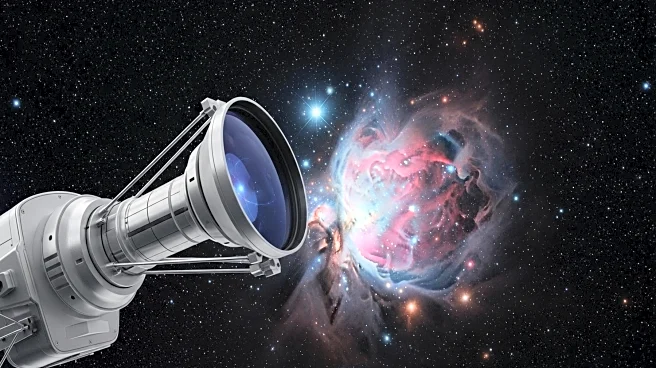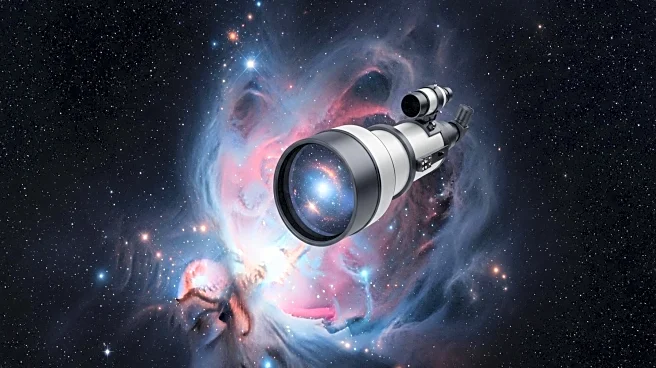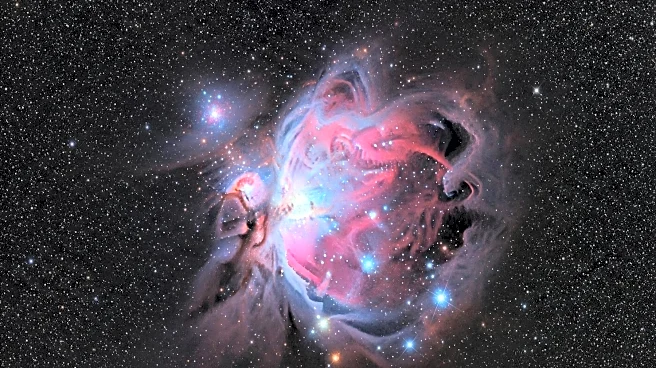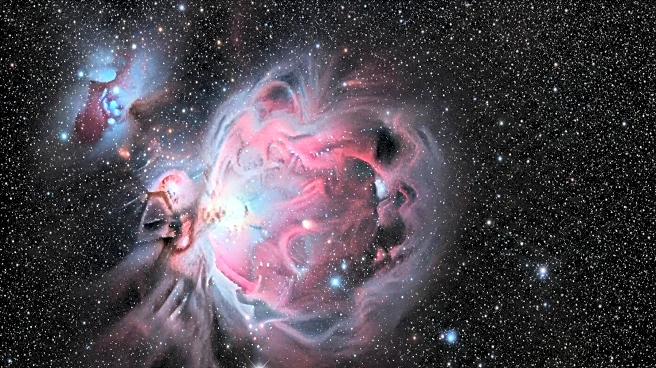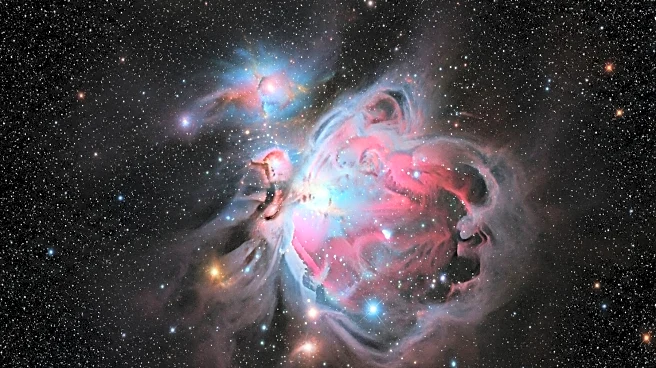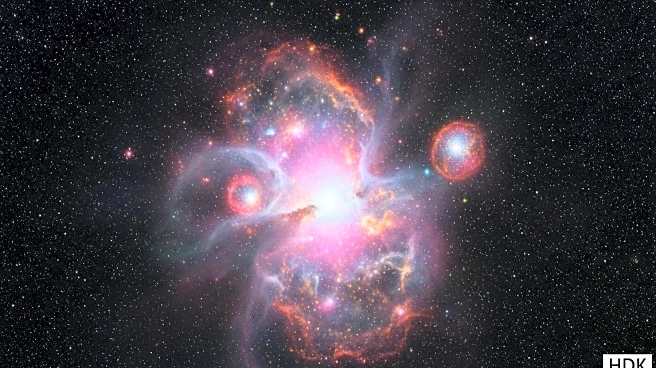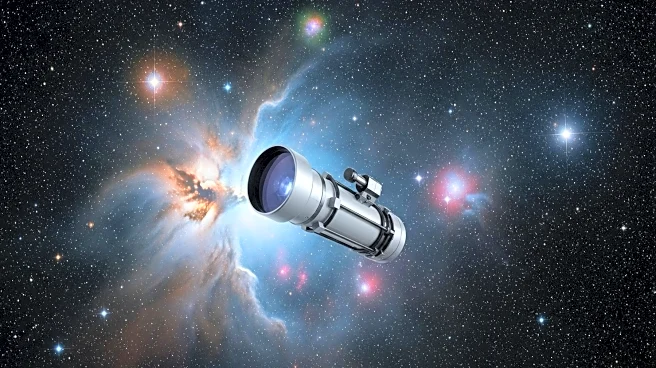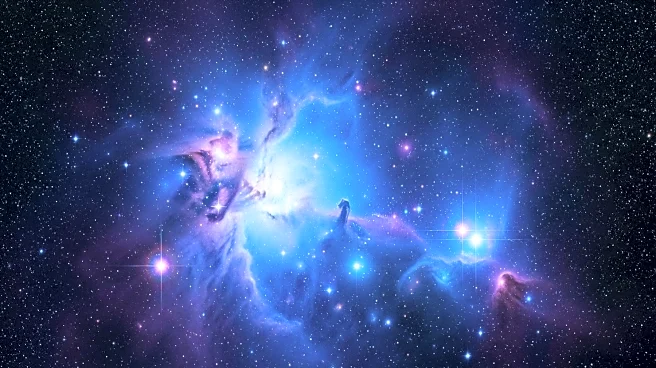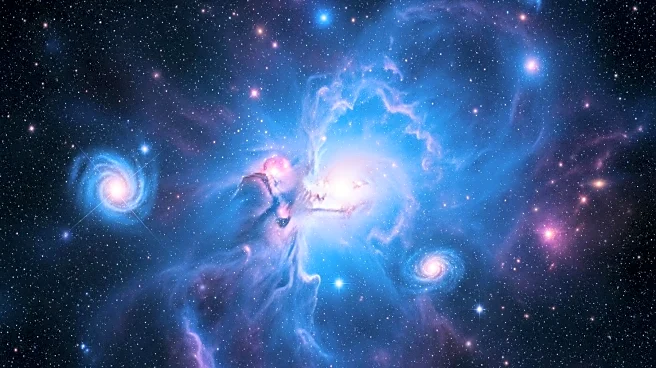What's Happening?
The James Webb Space Telescope has unveiled detailed images of Sagittarius B2, a dense molecular cloud near the Milky Way's center, revealing intense star formation activity. This region, located about 390 light-years from the supermassive black hole Sagittarius A*, spans 150 light-years and contains enough gas to form 3 million sun-like stars. Despite holding only 10% of the galactic center's gas, Sagittarius B2 produces half of its stars, presenting a mystery as to why star formation is so intense here compared to the rest of the galactic center. The telescope's infrared instruments have provided unprecedented detail, aiding in the study of star formation processes.
Why It's Important?
The findings from the James Webb Space Telescope are significant for understanding the dynamics of star formation in the Milky Way's central regions. Sagittarius B2's intense star formation contrasts with the lower rates in the surrounding galactic center, posing questions about the factors influencing these processes. Insights gained from these observations could inform theories on galaxy evolution and the conditions that lead to star birth. Understanding these dynamics is crucial for astrophysics and could impact our knowledge of the universe's early star formation conditions.
What's Next?
Researchers will continue analyzing the data from the James Webb Space Telescope to explore the factors driving star formation in Sagittarius B2. The role of magnetic fields and other cosmic phenomena will be investigated to understand their impact on star birth rates. Further studies may reveal why Sagittarius B2 is more active than other regions in the galactic center, potentially leading to breakthroughs in astrophysics. These findings could also inform future research on star formation in other galaxies and contribute to the broader understanding of cosmic evolution.
Beyond the Headlines
The observations of Sagittarius B2 could provide insights into the conditions of early universe star formation, offering a glimpse into the processes that governed star birth after the Big Bang. The intensity of star formation in this region is believed to be similar to the early universe, highlighting the importance of understanding these dynamics. This research may also shed light on the role of magnetic fields and other cosmic phenomena in shaping star formation rates, influencing future studies on galaxy formation and evolution.

